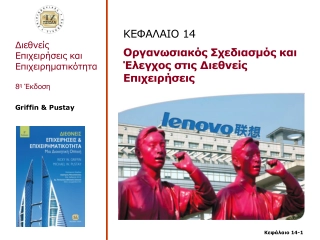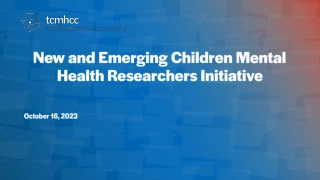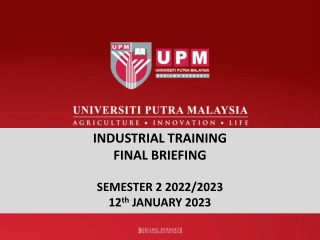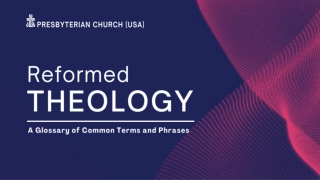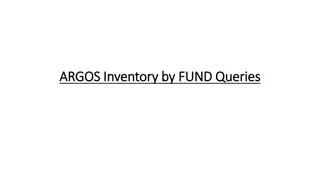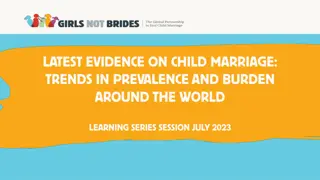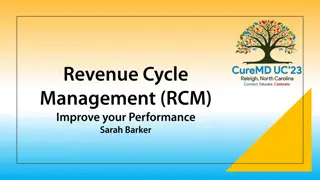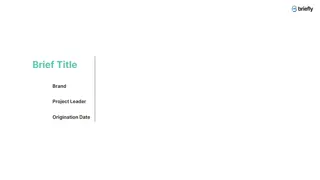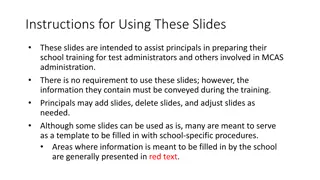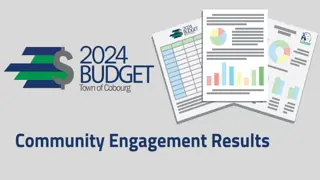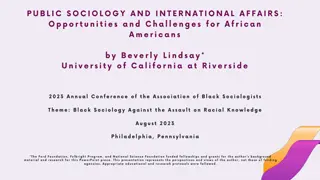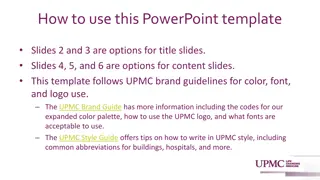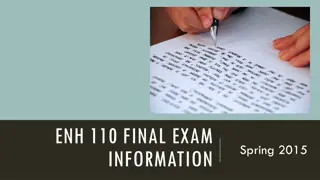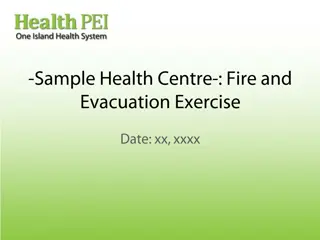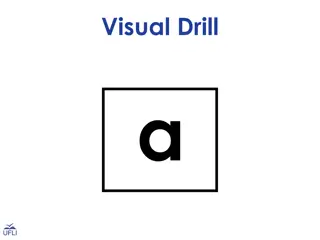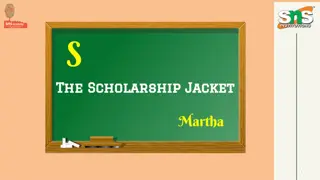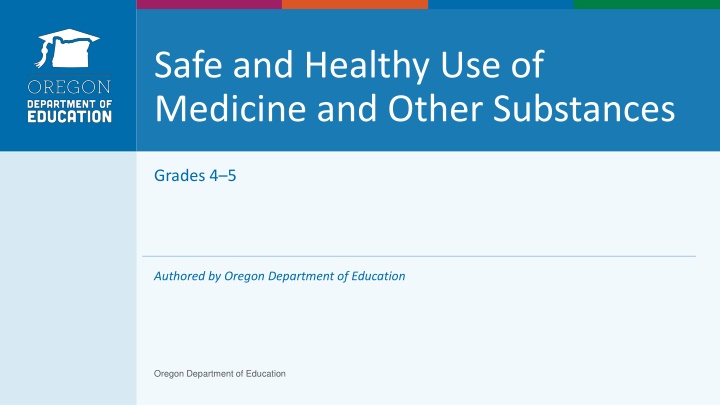
Safe and Healthy Use of Medicine for Grades 4-5
Explore essential questions and learning goals around the safe use of medicine and substances in grades 4-5, including understanding substance use disorder and helpful tips for using medication responsibly.
Download Presentation

Please find below an Image/Link to download the presentation.
The content on the website is provided AS IS for your information and personal use only. It may not be sold, licensed, or shared on other websites without obtaining consent from the author. If you encounter any issues during the download, it is possible that the publisher has removed the file from their server.
You are allowed to download the files provided on this website for personal or commercial use, subject to the condition that they are used lawfully. All files are the property of their respective owners.
The content on the website is provided AS IS for your information and personal use only. It may not be sold, licensed, or shared on other websites without obtaining consent from the author.
E N D
Presentation Transcript
Safe and Healthy Use of Medicine and Other Substances Grades 4 5 Authored by Oregon Department of Education Oregon Department of Education
Essential Questions When and how can medicine or substances be used safely to promote wellness? What can I do to protect myself against the addictive and harmful effects of some substances? What is substance use disorder? 2
Learning Goals I can describe how to take medicine and other substances safely. I can recognize the difference between helpful and harmful ways to use medicine and other substances. I can demonstrate understanding of substance use disorder and resources that help people with this medical condition. 3
Share What You Know With a Partner Medicine Over-the-counter (OTC) Prescription Substance Substance use disorder 4
Words to Know (1) Medicine: a substance or preparation used in treating a condition Over-the-counter (OTC): medicine available for purchase without a prescription from a doctor Prescription: medicine prescribed by a doctor 5
Words to Know (2) Substance: a material, such as alcohol or drugs, that affects how the brain and the body work and causes changes in mood, awareness, thoughts, feelings or behavior Substance use disorder: a treatable disease that affects a person s brain and behavior Causes problems a doctor would consider very serious, like the inability to meet major responsibilities at work, school and home. Can be hard to stop using substances even when a person may want to 6
Take medicine only when needed. Take medicine under adult supervision. Follow directions for using medicine. Take only your own medicine. Do not mix different medicines. Accurately measure medicine dosage using appropriate tools. How can medicine help us? 7
Labels Help Us Take Medicine Safely Over-the-counter medicine label Prescription medicine label 8
Medicine In My Home https://youtu.be/hT6Th_QfQKE?si=qIM bjEMm6Z6JOTHy
Prescription Medicine Label Handout Pharmacy Name Amoxicillin 250 mg pill Qty: 10 Take 1 pill by mouth 2 times a day Jasmine Smith 111 Street City, Oregon 11111 Refills: 0 Expiration: 10/15/2025 10
Prescription Medicine Label Handout: Answers Whose prescription is it? Jasmine Smith What is the name of the medicine? Amoxicillin How often should the medicine be taken? Twice a day How much medicine should be taken for each dose? 1 pill How many times can the medicine be refilled? 0 times When will the medicine expire? 10/15/2025 11
Harmful Ways of Using Medicine Taking medicine when it s not necessary Taking medicine without adult supervision Not following directions for using medicine Skipping medications that you need to stay safe or healthy Taking other peoples medicine Mixing different medicines Inaccurately measuring medicine dosage or using inappropriate tools 12
Medicine and Substance Medicine: a substance or preparation used in treating a condition Substance: a material, such as alcohol or drugs, that affects how the brain and the body work and causes changes in mood, awareness, thoughts, feelings or behavior Can include medicine but also includes things like alcohol and cigarettes 13
Substance Use Spectrum Substance use disorder Beneficial Use Nonuse A treatable disease that affects a person s brain and behavior. It causes problems a doctor would consider very serious like the inability to meet major responsibilities at work, school and home. It can be hard to stop even though they may want to. Use that has a positive health, social or spiritual effect. No use of substances. Example: Taking medication as prescribed. Example: Does not take any medicine. Example: Inability to stop using alcohol or other substances when wanted A person may move back and forth between stages over time. Adapted from: Save Lives Oregon Learning Collaborative
Understanding Habits and Addiction https://www.youtube.com/watch?v=oV38woahNso 15
Key Understandings From the Video Addictive behaviors are more powerful than habits. People can pretend they don t have an addictive behavior. People can be addicted to many different things (cigarette smoking, computer games, social media) Addiction can cause personality changes. People have a hard time resisting what they are addicted to. Breaking free of addiction is very difficult. 16
Consider your choices. Follow directions for medicine. Seek support from a trusted adult. What can I do to protect myself? 17
Trusted adults School counselor School nurse Where can I find support? 18
Essential Questions Review When and how can medicine or substances be used safely to promote wellness? What can I do to protect myself against the addictive and harmful effects of some substances? What is substance use disorder? 19
I can describe how to take medicine and other substances safely. I can recognize the difference between helpful and harmful ways to use medicine and other substances. I can demonstrate understanding about substance use disorder and resources that help people with this medical condition. Learning Goals Review 20
What is one action you can take to be safe and healthy when using medicine? Take Action 21

